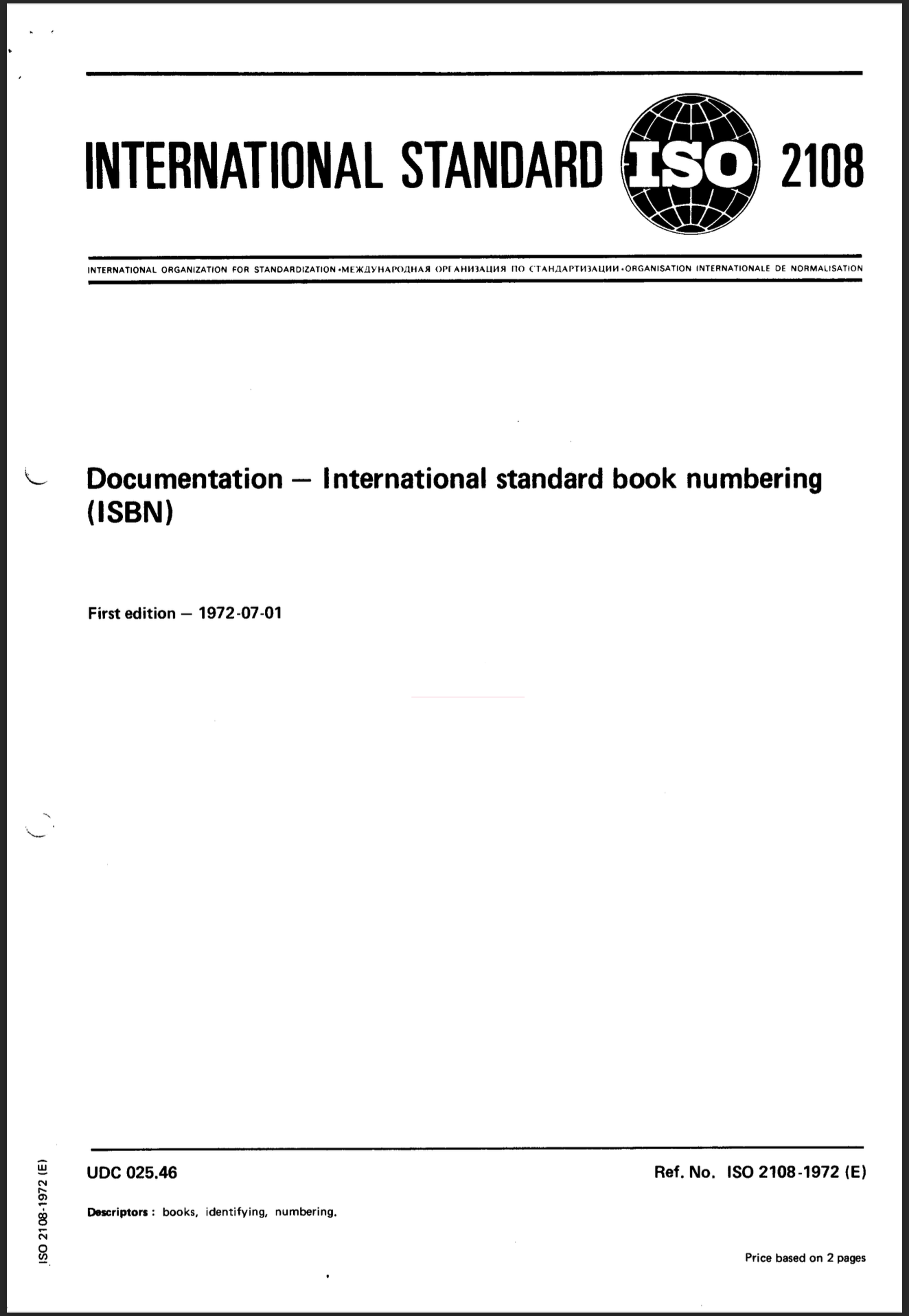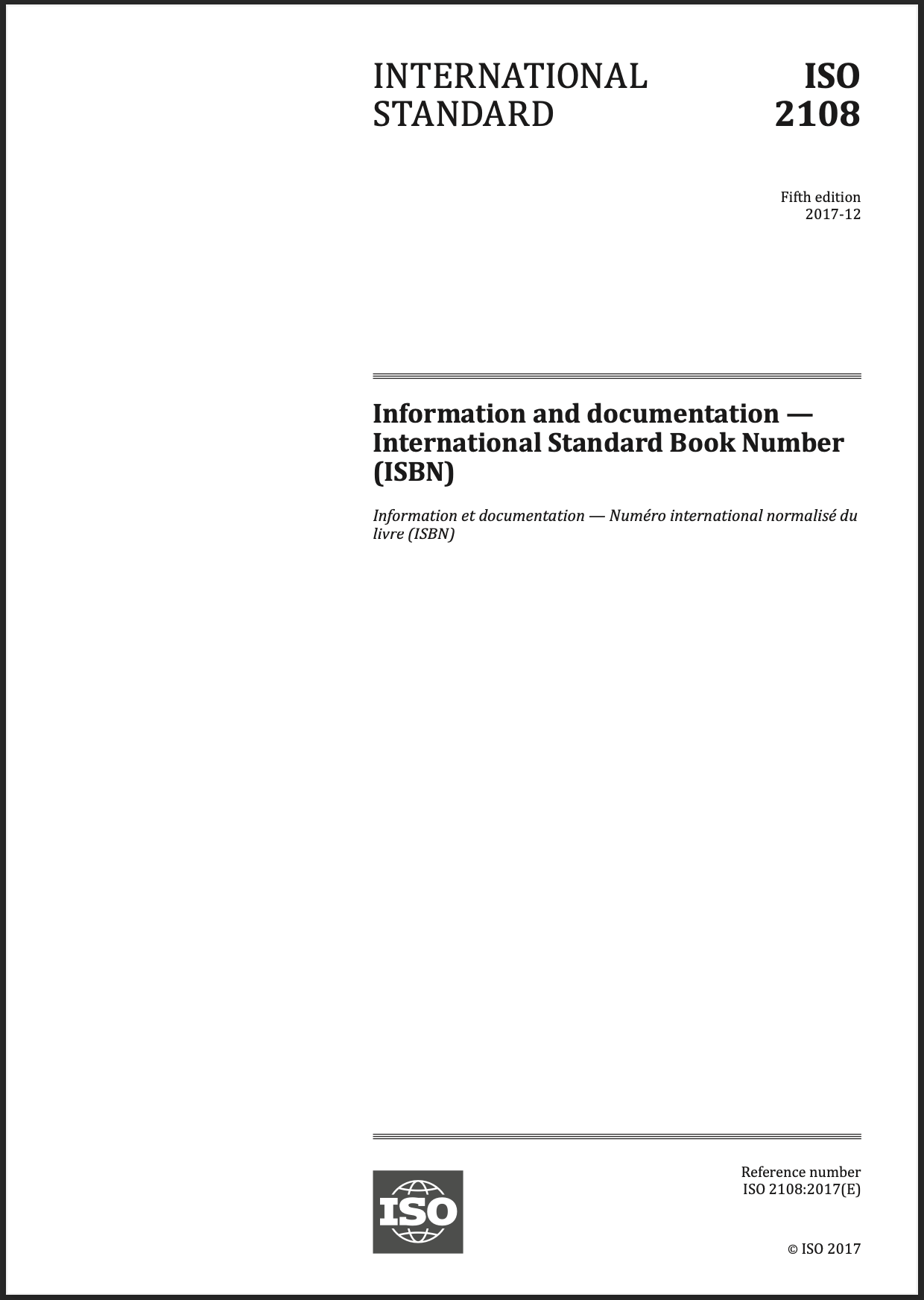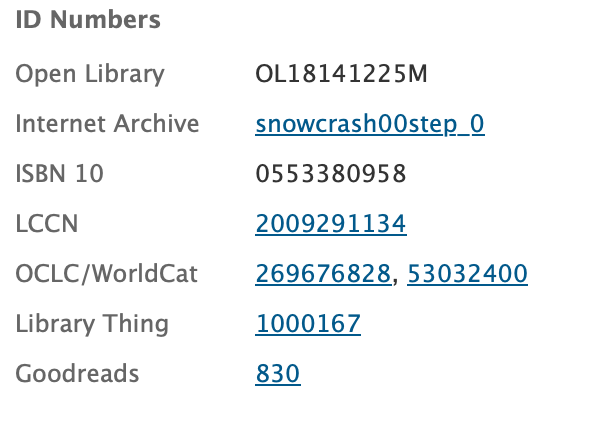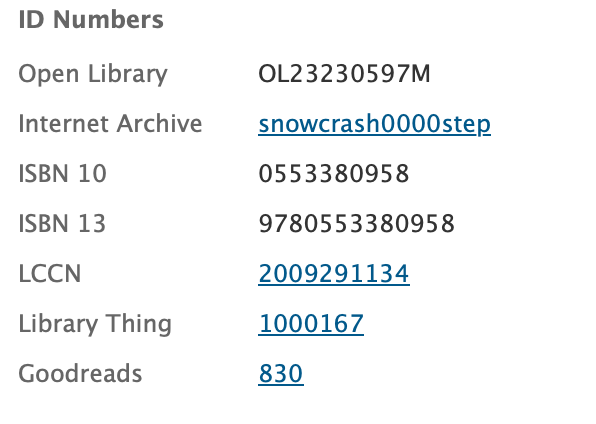Support for ISBN bibliographic information auto-fetch through the OpenLibrary
Introduction
The International Standard Book Number (ISBN)
The International Standard Book Number (ISBN) is the ubiquitous identifier used to uniquely identify books and other monographic publications. It provides a standardized way to reference and catalog books, making it easier to manage and track publications across the publishing industry.
Since its launch in 1972, the ISBN has been an essential part of the publishing industry, providing a unique identifier for books and other monographic publications. Initially a 10-digit number, it was expanded to 13 digits in 2005.
ISBNs are essential for the book trade, libraries, and bibliographic services. They provide a unique identifier for each edition and format of a book, simplifying inventory management, sales tracking, and cataloging processes.
Each ISBN uniquely identifies a specific edition and format of a book, making it invaluable for inventory management, sales tracking, and bibliographic record-keeping.
The purpose of this International Standard is to coordinate and standardize the use of book numbers internationally. An International Standard Book Number (ISBN) identifies one title, or edition of a title, from one specific publisher, ensuring it is unique to that title or edition.
A brief history of ISBN
ISBN is an adoption of the British Standard Book Numbering (SBN) system, a 9-digit system originally developed by the bookseller WHSmith. The SBN system was first introduced in the United Kingdom in 1967, then adopted and extended by ISO/TC 46 for the international community.
The initial ISBN standard was approved in September 1971 by ISO members and published the year after, as ISO 2108:1972.
| ISO 2108:1972 (1st edition) | ISO 2108:2017 (5th edition) |
|---|---|

|

|
The standard was later revised as:
-
ISO 2108:1978 (2nd edition);
-
ISO 2108:1992 (3rd edition);
-
ISO 2108:2005 (4th edition);
-
ISO 2108:2017 (5th edition).
In 2005, the number of digits was increased to 13. In the words of the standard, this was done to "increase substantially the numbering capacity of the global ISBN system and to harmonise the format of the ISBN with the EAN-UCC product code system."
Therefore there are currently 2 types of ISBN codes:
-
ISBN with 10-digits, now commonly referred as "ISBN-10";
-
ISBN with 13-digits, now commonly referred as "ISBN-13".
The ISBN system
The ISBN system is managed by the International ISBN Agency. The agency is appointed as the Registration Authority for this ISO standard to coordinate and supervise worldwide use of the ISBN system.
The International ISBN Agency plays a crucial role in the global book industry by registering additional National ISBN agencies. These national agencies, in turn, facilitate the registration of books within their respective countries or regions, ensuring a standardized system for book identification worldwide.
Structure of the ISBN code
This is best described by the original ISO 2108:1972 standard:
When an international standard book number is either written or printed it shall be preceded by the letters ISBN, and each part shall be separated by a space or a hyphen as in the following examples:
ISBN 0 571 08989 5
ISBN 90-7000-234-5
|
Note
|
These digits are the arabic numerals 0 to 9; in the case of the check digit only, an X can sometimes occur. |
An ISBN (ISBN 10 code) consists of ten digits made up of the following parts:
- group identifier
-
The group number is assigned by the International ISBN Agency for a group of publishers. (i.e. national, geographical, language or other convenient group) "It will vary in length from group to group according to the title output of the group concerned." (ISO 2108:1972, 2.1)
- publisher identifier
-
"The publisher identifier will be allocated internally within the group, by the agency appointed for this purpose. It will vary in length from publisher to publisher according to the title output of the publisher concerned." (ISO 2108:1972, 2.2)
- title identifier
-
"The length of the title identifier will be determined by the length of the group and publisher identifiers which precede it." (ISO 2108:1972, 2.3)
- check digit
-
"The check digit is calculated on a modulus 11 with weights 10-2, using X in lieu of 10 where 10 would occur as a check digit." (ISO 2108:1972, 2.4)
The title identifier is the only part of the ISBN that is variable in length, depending on the length of the group and publisher identifiers.
The assigners of identifiers are as follows:
-
The group identifier is assigned by the International ISBN Agency.
-
The publisher identifier is assigned by the regional ISBN agency.
-
The title identifier is assigned by the publisher.
The 13-digit ISBN is made up of the same parts except that the group identifier can be longer. The check digit is calculated differently, and the ISBN-13 is the same as the EAN-13 barcode.
OpenLibrary: A Digital Library Initiative
OpenLibrary is a project of the Internet Archive, aiming to create "one web page for every book ever published."
The International ISBN Agency is only concerned with assigning group identifiers, and does not keep a global database of ISBNs. There are various commercial databases that provide ISBN lookup services, but these are all proprietary and are only accessible behind paywalls.
OpenLibrary, on the other hand, is an open, editable library catalog that provides free access to millions of book records, including many full-text books.
OpenLibrary maintains a vast database of bibliographic information, indexed by ISBN among other identifiers, and provides an open API for retrieval of bibliographic information. This makes it an excellent resource for retrieving book metadata programmatically.
|
Note
|
Keep in mind that OpenLibrary is a community-driven project. While it already provides millions of ISBN records, it does not contain the full set of metadata of all books and monographs issued with an ISBN identifier. We encourage anyone who discovers missing or incorrect data to contribute to the OpenLibrary project by adding or correcting the metadata. |
Difference between OpenLibrary and Crossref
Crossref is a paywalled "for-profit service" run by a non-profit organization, which provides a slow bibliographic endpoint to encourage users to pay for their faster API.
On the other hand, OpenLibrary is completely open and free, with an excellent data API that is not limited or restricted.
We commend the OpenLibrary for democratizing bibliographic information access, and would strongly recommend usage of and contribution to the OpenLibrary over Crossref.
We find that bibliographic information from OpenLibrary often exceeds in quality with compared to the same from Crossref.
-
This stems from the fact that OpenLibrary is a community-driven project, and the data is often curated by volunteers who are passionate about books and libraries.
-
Crossref on the other hand takes whatever publishers dump into it, and often the metadata is incomplete or incorrect.
Relaton and ISBN Support
Relaton, an interoperable data model for citations based on ISO 690, has now expanded its capabilities to include ISBN lookup through OpenLibrary. This integration allows users to easily retrieve bibliographic information for books using their ISBN.
The new functionality is implemented in the relaton-isbn gem. This addition to the Relaton ecosystem further enhances its ability to provide comprehensive bibliographic data across various identification systems.
Relaton supports retrieval of both ISBN-10 and ISBN-13 from OpenLibrary.
Using Relaton for ISBN Lookups
Installation and setup
To use Relaton’s ISBN lookup functionality, you’ll need to install the Relaton CLI.
This can be done using the following command:
$ gem install relaton-cliFetching bibliographic data
Once installed, you can use the Relaton CLI to fetch bibliographic data for books using their ISBN.
$ relaton fetch isbn:{ISBN}This will return the bibliographic record in Relaton XML format by default. You
can specify other output formats using the -f flag, such as YAML or BibTeX.
Example: Looking up "Snow Crash"
We use Neal Stephenson’s seminal cyberpunk novel "Snow Crash" as an example. This book, first published in 1992, is often credited with popularizing the concept of the Metaverse.
The ISBN-13 for a popular paperback edition of "Snow Crash" is 978-0553380958.
Here’s how we can fetch its bibliographic data using Relaton:
$ relaton fetch isbn:9780553380958 -f yamlThis command will return the bibliographic information in YAML format.
Here’s what the output might look like:
---
schema-version: v1.2.9
id: '9780553380958'
title:
- content: Snow crash
format: text/plain
type: main
link:
- content: http://openlibrary.org/books/OL18141225M/Snow_crash
type: src
docid:
- id: '9780553380958'
type: ISBN
primary: true
date:
- type: published
value: '2000'
contributor:
- person:
name:
completename:
content: Neal Stephenson
role:
- type: author
- person:
name:
completename:
content: Juanma Barranquero
role:
- type: author
- organization:
name:
- content: Bantam Books
role:
- type: publisher
revdate: '2000'
place:
- city: New YorkThis YAML output provides a wealth of information about the book, including its title, author, publisher, publication date, and more. All of this data is structured according to the Relaton bibliographic data model, making it easy to integrate with other Relaton-compatible systems.
Beyond basic lookups
While simple ISBN lookups are straightforward, Relaton’s capabilities extend beyond this.
Batch processing
You can create scripts to process multiple ISBNs in batch. For example:
#!/bin/bash
ISBNs="9780553380958 9780307887436 9780062190376"
echo "" > sci_fi_books.bibtex
for isbn in $ISBNs; do
relaton fetch isbn:$isbn -f bibtex >> sci_fi_books.bibtex
doneThis script would create a BibTeX file containing entries for "Snow Crash" and two other science fiction novels.
Integration with Ruby Code
For developers working within the Ruby ecosystem, the relaton-isbn gem can be used directly in Ruby code:
require 'relaton_isbn'
isbn = "9780553380958"
item = RelatonIsbn::IsbnBibliography.get("isbn:#{isbn}")
puts item.to_yamlThis allows for more complex processing and integration with other Ruby-based systems.
Enhancements and caveats
Challenges with OpenLibrary data
OpenLibrary is a valuable resource for bibliographic information, offering a vast collection of book data that is openly accessible. It provides unique identifiers for books and aims to create "one web page for every book ever published."
However, using OpenLibrary data comes with its own set of challenges:
-
Data quality varies significantly across entries;
-
Metadata is not consistently normalized;
-
Book information can be incomplete or outdated;
-
Duplicate entries for the same book are common;
-
User-contributed data may introduce errors.
These issues arise from OpenLibrary’s collaborative nature, where data is contributed by various users and sources without rigorous standardization.
We recommend using OpenLibrary as a starting point for gathering book information, but users should be prepared to verify and supplement the data from other sources.
Specific examples of OpenLibrary data challenges
Conflicted entries on a unique ISBN number
Given that the OpenLibrary is contributor focused, there are occasionally issues with conflicting entries for the same ISBN.
This can lead to confusion when trying to retrieve accurate bibliographic data.
Conflated author names
Some author names are actually combinations of multiple names.
This entry for Beowulf and the Finnesburg Fragment lists a single author as "John R. Clark; Wrenn, C. L.; Tolkien, J. R. R. Hall".
However, this single author entry contains 3 creators’s names rolled into one.
Incomplete publication information
Some entries lack complete publication details, such as:
-
Missing publisher
-
Incomplete publication date (only year, no month or day)
-
Missing publication place
-
Incomplete edition information
For these entries, when you notice any missing or incorrect bibliographic data, we encourage you to directly contribute to OpenLibrary to improve the quality of the data.
At least you have a direct avenue to fix the item for your usage and benefit others who may encounter the same issue!
Duplicate entries
OpenLibrary often has multiple entries for the same book, especially for works with many editions.
These duplicates may contain conflicting information. For example, "1984" by George Orwell might have several entries with different publication years, ISBNs, and even slight variations in the title.
Missing or incorrect cover images
While OpenLibrary aims to provide cover images, many entries lack them or have incorrect images associated.
That said, if you are concerned only about bibliographic citations, then this isn’t a problem.
Working with OpenLibrary data
Despite these challenges, OpenLibrary remains a valuable resource.
To make the most of it:
-
Double-check the rendered bibliographic information to ensure completeness of data;
-
Be prepared to fill in gaps in information manually (if you use Metanorma, use citation spans);
-
Contribute corrections back to OpenLibrary when errors are found;
By understanding these limitations and taking appropriate measures, you can effectively utilize the ISBN fetch functionality from OpenLibrary’s extensive publications database.
Conclusion
The addition of ISBN support to Relaton through OpenLibrary integration represents a significant enhancement to the Relaton ecosystem. It provides researchers, librarians, and developers with a powerful tool for retrieving standardized bibliographic data for books.
We encourage users to explore this new functionality, contribute to its development, and provide feedback to help improve this valuable resource for the broader community of bibliographic data users.

